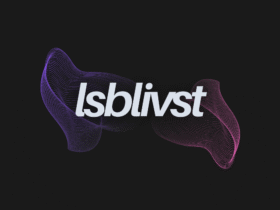In today’s competitive market, quality is the ultimate differentiator. A single poor experience can send customers to a rival. Traditional Quality Management Systems (QMS) are simply too slow for modern business. They rely on manual checks and small samples.
A smarter approach is here. Artificial intelligence transforms quality management into a proactive, predictive tool. An AI-powered QMS analyzes every interaction, uncovering deep insights. This technology is vital for any company, especially a small business, seeking superior operations and smarter growth.
This article explores AI-powered QMS. We will see how it helps every part of a business. We will focus on its impact on the modern contact center. We will discuss its benefits for a small business.
Understanding the Limits of Traditional QMS
A traditional QMS aims for consistency using standards like ISO 9001. These standards provide a framework for processes. The goal is to reduce errors, and the objective is to ensure repeatable outcomes. This is a noble and important target for any organization. It builds trust with customers.
The execution, however, is often flawed. Quality assurance teams perform manual audits. They might listen to 2% of customer service calls. They might inspect 5% of manufactured products. This is sample-based checking. It assumes a small sample represents the whole. This is a risky assumption.
Imagine a large contact center. It handles 10,000 calls a day. A 2% sample is only 200 calls. What happens in the other 9,800 calls? Major issues could be missed entirely. A new customer complaint trend could go unnoticed for weeks. Human auditors also have biases. They might focus on certain issues. They might miss others. The process is slow. Feedback reaches agents days or weeks later.
The Arrival of AI in Quality Management
AI changes the equation of QMS completely. An AI-powered QMS does not rely on small samples and can analyze 100% of interactions. It can process every single call and email. It can scan every customer chat. This comprehensive analysis provides a true picture of quality.
Machine learning algorithms are at the core. These algorithms learn from data. They identify patterns. They can understand human language using Natural Language Processing (NLP). NLP allows the AI to determine customer sentiment. Was the customer happy, angry, or frustrated? It can identify the root cause of the customer’s problem.
This is not a replacement for human managers. It is a powerful assistant. It gives managers the data they need. It allows them to focus on coaching and solving complex problems. The AI handles the heavy lifting of data analysis. The human provides the strategy.
A Vital Tool for a Small Business
Many people think AI is only for large corporations. They believe it is too expensive. They think it is too complex, which is no longer true. Cloud-based AI solutions are affordable and scalable. A small business can now access the same powerful tools as a global giant.
Let us consider an imaginary example. “Crafty Candles” is a small business. They sell handmade candles online. They have a customer service team of five people. The business is growing fast. The owner, Sarah, is worried about service quality. She cannot listen to every call herself. She cannot afford a large quality assurance team.
Sarah implements an AI-powered QMS. The system connects to her contact center software. It starts analyzing every customer interaction immediately. Within a week, the AI provides crucial insights. It finds that 30% of calls are about shipping status. This is a recurring, simple question.
The AI suggests creating a better automated tracking page on the website. Sarah does this and calls about the shipping dropping by 80%. Her team now has more time for complex issues. The AI also flags calls where customers mention a specific candle scent “smells weak”. Sarah investigates and discovers a bad batch of fragrance oil. She fixes the problem before it affects thousands of customers. This saved her business’s reputation.
Sarah’s example is not unique. For many enterprises, the return on investment is rapid. Aberdeen Group research indicates companies with strong quality assurance programs see a 75% higher customer retention rate. An AI QMS puts this level of performance within reach for any growing company. It turns quality from a cost center into a powerful engine for customer loyalty.
Revolutionizing the Contact Center
The modern contact center is a hub of data. Every interaction is a data point. An AI-powered QMS unlocks the value within this data. It integrates directly with contact center software, network monitoring tools, and more.
The AI performs many tasks. It transcribes every call automatically. It searches the text for keywords, topics, and sentiment. It scores every interaction based on custom criteria. Did the agent use the proper greeting? Did they show empathy? Did they solve the customer’s problem on the first try? This is done consistently. It is done without bias.
Managers receive detailed dashboards. They can see performance trends for the entire team. They can drill down to individual agent performance. They can identify agents who need more coaching. They can also identify top performers. They can use recordings of excellent calls as training examples for new hires.
Empowering Agents with Real-Time Data and Coaching
Traditional quality checks often feel punitive. Agents worry about managers finding mistakes. An AI QMS changes this dynamic completely. It becomes a tool for personal growth. The focus shifts from finding fault to providing support. This builds a more positive work environment. Agent confidence grows. It creates a culture of continuous improvement.
The support is not just after the fact. Some advanced AI systems provide real-time assistance. They listen to calls as they happen. The AI can detect when a customer is getting upset. It can identify a complex product question. It then provides help directly on the agent’s screen. This is like having an expert coach for every single call.
Imagine an agent named Mark. He is handling a difficult billing dispute. The customer is angry. The AI instantly recognizes the high negative sentiment. It pushes the correct knowledge base article to Mark’s screen. It also flashes a reminder: “Show empathy. Use the customer’s name.” Mark uses the information. He resolves the issue quickly. The customer calms down. A negative interaction becomes a positive one.
AI also enables hyper-personalized coaching. The system might find that one agent speaks too quickly when nervous. It might find another agent who consistently forgets a required compliance statement. Instead of generic group training, managers can assign specific call recordings for review. This targeted approach is far more effective. It respects the agent’s time. It helps them improve on their unique challenges.
The Challenge of Unwanted Communication
A major drain on business resources is spam. Dealing with unwanted calls is a constant battle. These calls waste time and frustrate agents. They skew important business metrics. A contact center might report high call volumes. Management might think they need to hire more agents. In reality, a large percentage of those calls are useless spam.
This is where an AI QMS provides a direct financial benefit. The system is smart enough to identify spam. It looks for specific patterns. Are the calls very short? Do they come from suspicious numbers? Is there a long silence at the beginning of the call? Does the caller use specific spam-related phrases? The AI learns these patterns.
The system can automatically tag these interactions. It removes them from performance metrics. This gives managers a true picture of productive work. It helps with accurate staffing. Some systems can integrate with tools to block spam calls entirely. By identifying spam numbers, the AI helps build a dynamic blocklist. This stops the unwanted calls from ever reaching an agent. For a small business, saving even one hour of an agent’s time per day adds up to significant savings over a year.
Creating a Unified View of Quality
Excellence is not an isolated departmental task. It is a company-wide responsibility. A truly intelligent quality system must connect to multiple data sources. It needs to look beyond customer conversations. It should pull data from the applications your service teams use daily. It also needs information from the systems that monitor your technical infrastructure. This integration creates a complete, holistic view of the entire customer experience. It shows the full story.
Imagine a patron calls to complain about a slow website. The AI within the quality system immediately tags this interaction. It notes the customer’s clear frustration. Simultaneously, the system pulls live data from infrastructure performance dashboards. It sees a significant spike in server latency at the exact time of the customer’s call. The artificial intelligence correlates these two separate events instantly.
An automated alert is generated without human intervention. This notification goes directly to the information technology department. It contains all the necessary context. “Customers are reporting website slowness. Our server monitoring confirms a performance issue. This is a high-priority problem.” This is proactive problem resolution. The issue is identified. It is routed to the correct team in real time. No one waits for a manager to connect the dots days later.
This deep connectivity is transformative. The system can also link to your customer relationship database. It can tie direct feedback to a client’s specific purchase history. It can interface with manufacturing systems on the factory floor. It can trace a product defect mentioned in a call back to a specific production line. The possibilities are truly vast.
The Power of Predictive Insights
The greatest benefit of an AI-powered QMS is its predictive ability. Traditional systems look backward. They tell you what went wrong yesterday. AI systems look forward. They tell you what might go wrong tomorrow. They analyze trends. They find small signals in the noise.
For example, the AI might notice a small but growing number of customers mentioning a competitor’s new product. It is just a whisper at first. But the AI flags it. It alerts the marketing team. “A new competitive threat is emerging. We need to analyze this.” This early warning gives the business time to react. It gives them time to strategize.
Implementing Your AI-Powered QMS
Adopting an AI QMS does not have to be difficult. It is possible to divide the process into easy steps. An effective implementation is guaranteed by a clear plan. It assists you in maximizing the technology.
To start with, identify your objectives. What is it that you want to accomplish? Wish to enhance First Call Resolution (FCR)? Do you want to reduce agent training time? Do you want to identify more sales opportunities? Clear goals will guide your implementation.
Second, choose the right partner. Many vendors offer AI QMS solutions. Look for a solution that fits your business size. It should integrate easily with your existing software. Ask for a demonstration. See how the tool works in practice.
Third, integrate the system. Connect it to your contact center software. Connect it to other relevant data sources. The more data the AI has, the smarter it becomes. A good vendor will help with this integration process.
Fourth, train your team. Managers and agents need to understand how to use the system. They need to trust the data it provides. Show them how the AI insights can help them succeed in their roles. It is a tool for their benefit.
Conclusion
The world of business will only become more complex. The expectations of customers will keep on increasing. Firms that use old-fashioned manual processes will be left behind. The future is all about agile, intelligent, and proactive organizations.
A smart system of quality management is one of the pillars of this future. It transforms assurance from a reactive checklist to a strategic function. It empowers enterprises of any size to compete effectively. It helps all companies understand their patrons on a much deeper level.
This technology creates a comprehensive view of company performance. It enhances your operational platforms. It helps silence disruptive, non-productive communications. By embracing this evolution, you are not just improving a single metric. You are building a more resilient and successful organization. The journey begins now.











Leave a Reply